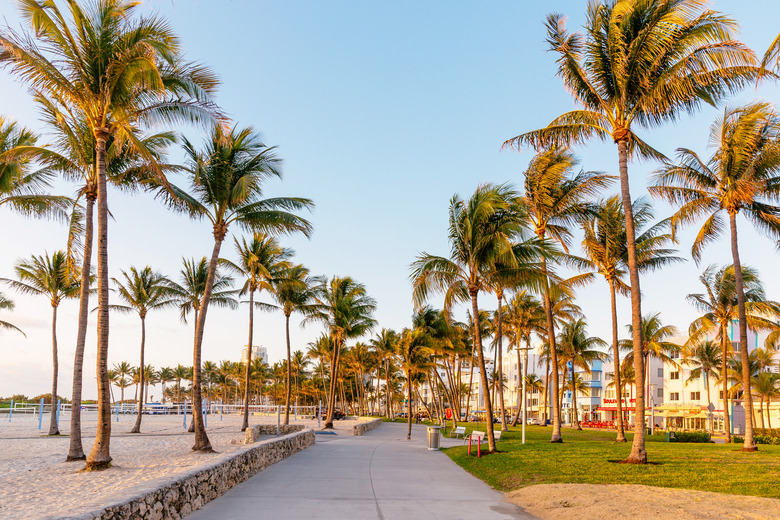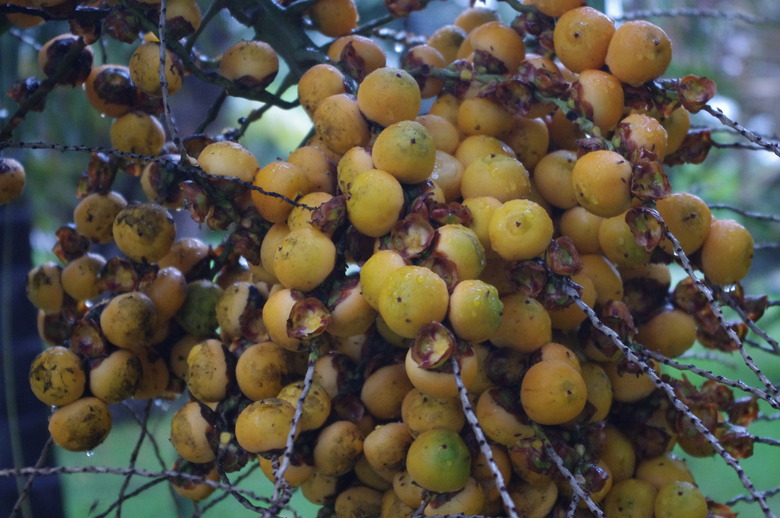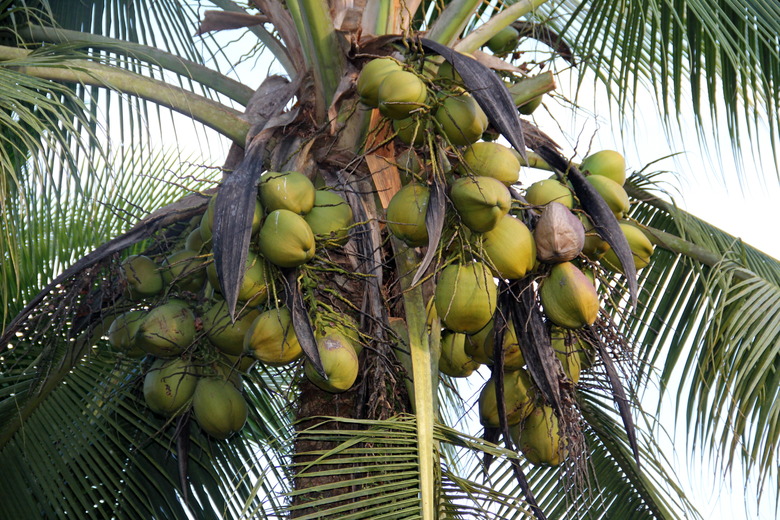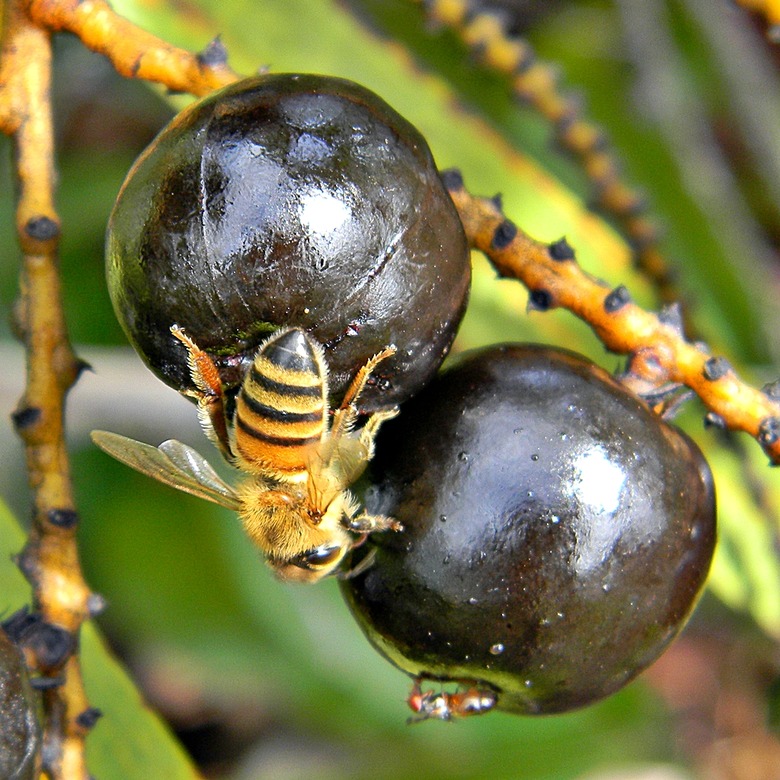Florida Palm Trees & Their Fruit
The state of Florida is awash with palm trees (Arecaceae), but most people don't know that the fruit from palm trees has kept generations of people alive and fed for centuries.
How Palm Fruit Has Shaped Florida's History
Stretching from the Panhandle, where cold-hardy palms thrive in USDA hardiness zone 6b, to the tropical climate of the Florida Keys, Florida palm trees have withstood hurricanes, tornados and other inclement weather while still producing edible or useable fruit.
The fruit from palm trees extends beyond the kitchen pantry and includes fiber derived from the fruits, oil and pharmacy-grade medicine to supplemental medicine. The palm tree berries are called drupes and vary in size and shape.
The coconut is the second largest drupe in the plant kingdom, according to Cocofina. If one falls on your head while you are walking underneath a coconut palm (Cocos nucifera), not only will you know about it, the injury from a 4-pound anvil dropping from around 25 feet can be life-threatening.
Florida's tropical climate is home to numerous fruit-bearing palm trees, and commercial harvesting of that palm tree fruit is a multimillion-dollar business. Coconuts lead the way in commercial enterprises, but the tart berries from a pindo palm (Butia capitata), grown best in USDA hardiness zones 8 to 9, produce orange drupes that make a tart but refreshing jelly. Also, the saw palmetto (Serenoa repens), much loved by bees, is a valued food source for animals and birds.
The Orange Fruit of Pindo Palm Trees
Clusters of orange berries emerge from pindo palms in Florida during the summer and into the winter. The berries have thin skin and are fibrous.
Many who appreciate the orange drupes suck out the juice and discard the rest of the berry, according to Specialty Produce. Tasting like a combination of apricot, pineapple and vanilla, the berries are eaten fresh, used for jellies and syrups or fermented for wine.
Tip
Large commercialization hasn't embraced the pindo palm. The products of its fruits can be found in local farmers markets and local vendors in Florida.
The pindo palm is a cold-hardy palm tree and can tolerate temperatures dropping to a chilly 10°F. At the same time, they are highly heat tolerant, a throwback to their origination in Brazil. Vitamins A and C are two derivatives sourced from the pindo palm berry.
Commercialization of the Coconut Palm
Coconut farms are found all over the world, and Florida is no exception. A casual walk through a park reveals the abundance of wild coconuts clustered just under the fronds at the top of the tree.
Intolerant of cold weather, the coconut palms are content living in USDA zone 10a and the coastal regions of zone 10b. The tropics provide the heat and water they need for growth.
The flesh of the coconut is known as the copra and is used to produce coconut oil, a multimillion-dollar industry according to Pepe's Plants. The coconut itself provides a consistent diet for many people, while the fibrous parts are reworked into a growing medium for other plants. Just lop off the end of a coconut, slip a straw into the center and sip the refreshing coconut milk. When finished, use a hammer to break the coconut into pieces and enjoy the flesh.
Saw Palmetto: From Berries to Sperm Boosters
The saw palmetto has long been a staple food and medicine for Native Americans in the southeastern United States. It grows in the wild in Florida and also adds to individual landscaping designs. Cold hardy and resistant to fire and drought, the palm grows best in USDA hardiness zones 6 to 10.
Extracts from the saw palmetto's berries have long been considered an alternative treatment for prostate cancer, although the American Cancer Society disavows the claim. That doesn't stop the saw palmetto supplement from being prominent in the supplement aisle.
Adding to the saw palmetto myth is the fact that in the early 1900s, urinary tract problems in men were treated with the extract, and it was also supposedly used to increase sperm production and boost libido. Mount Sinai researchers in New York believe that the berries affect testosterone levels and have an anti-inflammatory effect on the prostate.
Bees that feed off the nectar of the saw palmetto flowers produce honey, a popular commodity.
Warning
Gardening Solutions advises that you do not harvest the saw palmetto berries unless you have a Native Plant Harvesting Permit issued through the Florida Department of Agriculture and Consumer Services (FDACS) Division of Plant Industry (DPI).



